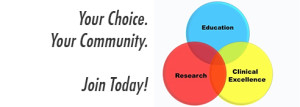What makes a good teacher? Many investigators have looked at the attributes that learners have identified in their best teachers and have concluded that while being a great clinical teacher is multifactorial, such educators share a number of generalizable traits. A 2008 literature review identified excellent medical knowledge, clinical reasoning, and technical skills, positive relationships with learners, outstanding communication skills, enthusiasm and the creation of a safe, supportive learning environment as key characteristics of good clinical teachers. (Sutkin et al., Acad Med. 2008;83:452–466)
But what role does feedback play? Numerous studies have demonstrated that learners rate faculty members who provide feedback as better teachers and not only want, but need constructive feedback to improve performance. (Torre DM et al., Acad Med. 2005;80:950–954) An estimated 81% of IM resident learners, however, reported that they received infrequent or no feedback from faculty (Isaacson et al., J Gen Int Med. 1995;10(S1):89) Learners given complimentary feedback were shown to have higher satisfaction scores but did not improve performance on procedural skills compared with those given specific behavioral feedback suggesting that satisfaction with feedback is a poor marker of the quality of feedback. (Boehler et al., Med Ed. Aug 2006;40(8):746-749)
The case for the importance of feedback in both trainees’ performance and perception of quality of teaching is clear, but what’s the best approach to providing meaningful, constructive, formative feedback? First, spend the time to verbalize detailed expectations up front and assess if your learners have their own specific goals for your time together. Next make feedback a priority and spend the time to observe your learners directly (identify strengths and weaknesses and focus on behaviors, both positive and negative) and indirectly (via written reports from 360 evaluations from nursing staff, social workers, peers and or patients). This will allow you to identify specific observable actions or behaviors. Oral presentations, differential diagnoses, progress notes, written or bedside histories and physicals are all opportunities for useful feedback.
Provide brief and formal feedback throughout the session or rotation with your leaners. Be deliberate about the timing and the location of your feedback. Brief feedback is generally a few sentences, is tied to a specific action, and should occur close to the time the action has occurred. For example, “Your differential for that patient was pretty comprehensive but be sure to include pulmonary embolism in patients presenting with tachycardia and shortness of breath even if they didn’t complain of chest pain.” Be sensitive to a safe learning environment when providing any kind of feedback. Often, brief feedback can occur on rounds or just after in a more private spot as necessary. Conversely, formal feedback is more comprehensive (usually 5-20 minutes) and should occur at mid-rotation or if a critical incident occurs, and should be held in a comfortable, private space. Formal feedback would include information such as “Your patient presentations are organized and you present the data well but I want to see you spend more time interpreting the data and creating management plans for your patients.”
When you start to deliver feedback, keep in mind that research has shown that deliberately labeling it as “feedback” does increase the perception that a learner has received more useful constructive criticism. Be specific and concise by focusing on specific behaviors that you’ve identified through your direct and indirect observations and limiting it to 2-3 points. Consider the “ask – tell – ask” approach to feedback which is recommended over the traditional feedback sandwich of which presents information as compliment-criticism-compliment leading some learners to miss the all important middle or constructive criticism. “Ask – tell – ask” starts with a learner’s reflection, “How do you think it went?” Follow up and ask the trainee about areas of success or foci for improvement. Then, share your perspective and as always, focus on specific behaviors and link back to your original expectations as appropriate. Finally, ask the student to create a plan for improvement and add and edit if necessary. This helps lead you to summarize the feedback and then commit to a plan to improve and/or set specific plans to accomplish the expectations you or your learner had originally set. As a resource to help you start practicing your feedback delivery consider using the checklist created by leaders in remediation from University of Colorado and previously presented at the Annual SGIM meeting shown below.
Feedback Checklist (created by Jeannette Guerrasio, MD and Jeffrey Glasheen, MD)
Type, Timing & Location
- Brief or formal feedback
- Identify optimal timing
- Location – private or public, safe
Method
- Start by labeling it “Feedback”
- Ask-Tell-Ask
Delivery
- Behaviors–comment on observed behaviors
- Be specific
- Be concise–limit to 2 or 3 areas
- Be unequivocally clear
- Beware of verbal and non-verbal communication
Moving Forward
- Summarize the feedback
- Commit to a plan to improve
Good luck, and remember, practice makes perfect!
Danielle Jones, MD
Brought to you by the Department of Medicine’s Education Community. Join a Community today.
Related Links
• Education Community, Emory Department of Medicine
• Office of Education, Emory Department of Medicine
• Emory University Department of Medicine
• Emory University School of Medicine
• Office of Faculty Development, Emory Department of Medicine
• Support our programs


